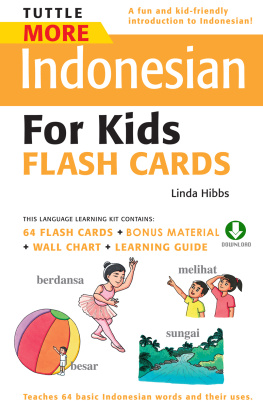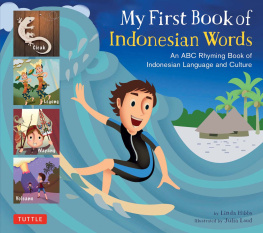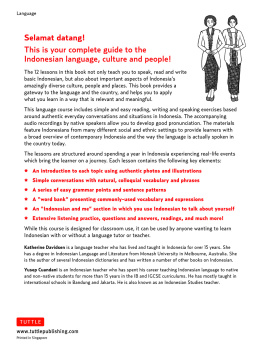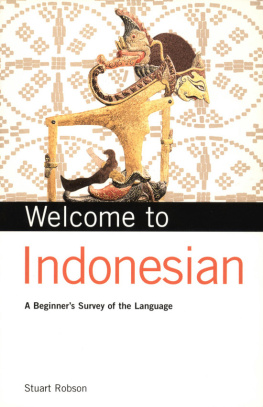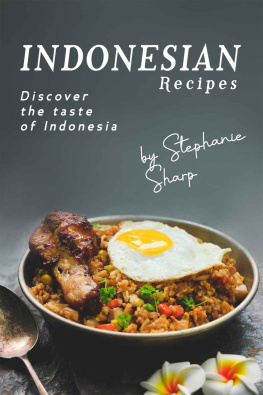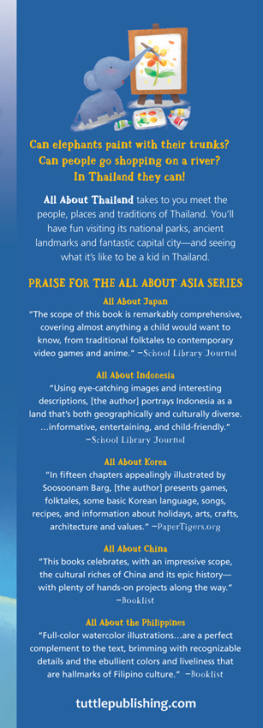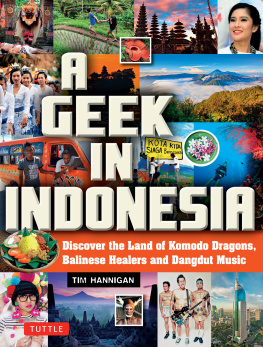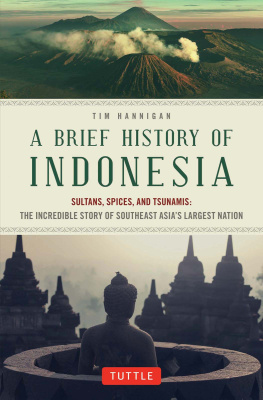Acknowledgments
I especially want to thank the main photographer for this project, my long time friend, Asita Majdi. Her wonderful photographic skills and love of her own culture can be seen in the beautiful photos she took specifically for this book. Her enthusiasm to embrace the project from her home in Yogyakarta and her willingness to help out for all requests was much appreciated.
I would also like to thank Michael Ewing for his inspiration for the Topeng Cirebon section and for providing several photos. Thank you also to; Wendy Miller for her beautiful photos; Emil and Liliana Schmid who kindly allowed their photos to be reproduced; Irene Ritchie for photos included in Wayang Kancil section and Kalimantan; Brynna and Rowan for providing the photograph of the Koran; Julienne Welsh, Barb Slee, Tracey Ferguson and Kris Williamson for their photos.
Thank you also to my first editor, Sandra and to Terri who enthusiastically led the book through to its final stages.
I thank my parents, Marge and Ray, for first introducing me to Indonesia as a child. To my son, Aden, and children everywhere, may this book allow you to catch a glimpse into a country that is rich with diversity.
A LAND OF
CONTRASTS
A rriving in Indonesia via plane and looking down on some of its 17,000 islands with volcanoes rising majestically above the white clouds, is like arriving in a magical place with giants stepping stones.
Indonesia is a land of contrasts. One minute you can be walking past ancient temples built thousands of years ago and the next minute you find yourself looking up at brand new modern buildings reaching for the sky. You can see people in traditional costume next to those wearing jeans and a t-shirt. If you want a snack, you can drop into a supermarket similar to ones in your own townor buy from someone pushing a little cart down the street. There is never a dull moment when you walk along the busy footpaths with hundreds of others, or dash across the busy road avoiding motor-bikes, cars and horse and carts. Step outside town and the scene is transformed into lush green rice fields and swaying coconut palms. Just when you think you are in the most peaceful place on eartha large and noisy bus roars past on its journey elsewhere.

A majestic volcano rising above the clouds

Prambanan, an ancient temple

A street in Yogyakarta

A modern supermarket

A street vendor
L ife in Indonesia is influenced by the hot and humid weather. There is no winter, spring or summer. There are wet and dry seasons but it is hot and humid all year long. During the wet season, dark clouds gather in the afternoon and bring torrential downpours of rain. Rainwater gushes down the streets, people scramble for shelter or hurriedly throw waterproof sheets over themselves as they ride by on their motorbikes. The rain often departs as suddenly as it arrives. The sun shines through the clouds and glistens on the water drenched streets and within moments the scene is as busy as it was before.

SAY IT
IN BAHASA INDONESIA...
| Hallo | Hello |
| Selamat pagi | Good morning |
| Terima kasih | Thank you |


DID YOU KNOW?
Population of Indonesia: 240 million
Captial city: Jakarta
Comparisons:
Population of Australia: about 23 million
Population of China: about 1.35 billion
Population United Kingdom: about 63 million
Population of the USA: about 317 million

EVERYDAY LIFE
G etting up very early each morning is important for many people in Indonesia. It is not only essential for those who follow the Islamic religion (see p. ) but also a way of avoiding the main heat of the day. By sunrise a farmer has already checked his animals and taken the fruit and vegetables to market to sell. By 7.00 AM the market is bustling and shops and schools are opening. By early afternoon, as the heat intensifies, schools often finish and even some workers take a short sleep known as tidur siang .
When Vita comes home from school sometimes she sleeps or plays with her little brother or helps her mom around the house. Sometimes, when it is very hot, everyone in the house sleeps for a while.

Vita helps her mom cook dinner.


Vita takes a washor has a mandi , as it is known in Indonesiatwice a day. A mandi consists of a large built-in tub of water in a bathroom with a well drained floor. You pour the cold water over you with a plastic dipper. The feel of the water in the cool of the morning makes Vita shiver but in the hot afternoon the water comes as a refreshing relief. After her mandi she brushes her teeth.
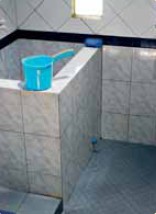
ON THE
WEEKENDS
I n their spare time Indonesian children play games or go places with their family just like you probably do. Some children love to skateboard, some play computer games, while others prefer more traditional games. Sports such as tennis, basketball or soccer are also popular. On weekends families might visit friends, take a trip to a mountain or beach or have fun at places like the entertainment park, Jaya Ancol in Jakarta or Water Bom in Bali.

Waterbom in Bali is popular with local and overseas tourists. Children love slipping down the many different slippery slides and splashing into the water.




![Linda Hibbs - Tuttle Indonesian for Kids Flash Cards: [Includes Downloadable Audio]](/uploads/posts/book/362847/thumbs/linda-hibbs-tuttle-indonesian-for-kids-flash.jpg)
